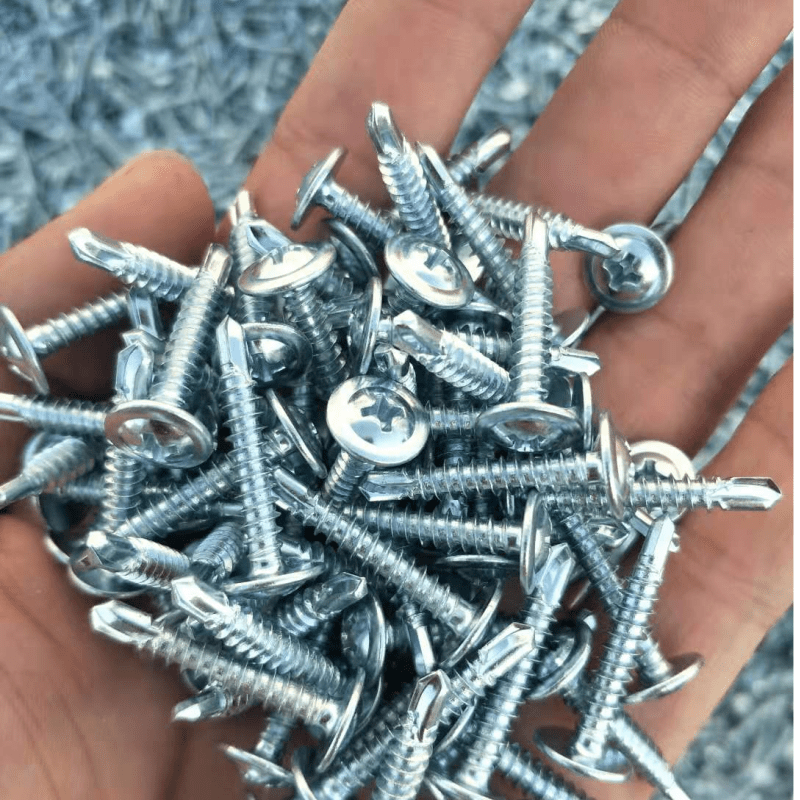Factory for Flat Washer Diameter Manufacturing and Customization Solutions
Understanding Flat Washer Diameter in Industrial Applications
Flat washers are a fundamental component in various industries, playing a crucial role in improving the reliability and stability of bolted joints. The importance of flat washer diameter cannot be overstated, as it directly affects the performance of fasteners and, consequently, the integrity of the structures or assemblies they support. In this article, we will explore the significance of flat washer diameter, its manufacturing processes, and the factors to consider when selecting washers for specific applications.
The Role of Flat Washers
Flat washers are typically made from a variety of materials, including metals, plastics, and rubber, and they come in different sizes and thicknesses. Their primary purpose is to distribute the load of a fastener, such as a screw or bolt, over a larger area. This distribution helps to prevent damage to the surface being fastened and minimizes the risk of loosening due to vibrations.
However, the effectiveness of a flat washer hinges significantly on its diameter. This parameter is crucial because it must match the fastener it is meant to support. An undersized washer may not effectively distribute the load, leading to surface damage or failure of the joint. Conversely, an oversized washer may not fit well in confined spaces or may interfere with other components.
Manufacturing Processes
Flat washers are produced through various manufacturing processes, with the most common methods being stamping, machining, and forging.
1. Stamping This method involves cutting flat washers from sheets of material using dies. Stamping is efficient for producing large quantities of washers with consistent dimensions. Factories specializing in this process can customize washer diameters and shapes to meet specific requirements.
2. Machining In this process, washers are cut from solid blocks of material, providing high precision in diameter and thickness. This method is ideal for custom applications where specific dimensions are crucial.
3. Forging Forged washers are made by molding heated metal into shape. This process helps improve the strength of the washer, making it suitable for high-stress applications.
flat washer diameter factory

Flat washer diameter is specified in terms of its inner and outer dimensions. The inner diameter (ID) must accommodate the fastener, while the outer diameter (OD) should be sufficient to cover the distribution area without excessive overhang.
Selecting the Right Flat Washer Diameter
When selecting the appropriate flat washer diameter for a given application, several factors must be considered
1. Bolt Size The inner diameter of the washer must match or exceed the diameter of the bolt or screw it is intended to work with. This ensures a proper fit and secure fastening.
2. Load Distribution Requirements The outer diameter should be large enough to effectively distribute the load over the surface area, preventing damage. In applications where dynamic loads or vibrations are prevalent, selecting a larger outer diameter may provide additional stability.
3. Material Compatibility Different materials have unique properties that can influence performance. For instance, rubber washers provide excellent vibration dampening, while metal washers offer higher strength and resistance to environmental factors.
4. Environmental Conditions Factors such as temperature, humidity, and exposure to corrosive substances can affect the choice of material and, in some cases, the diameter of the washer.
Conclusion
In conclusion, the diameter of flat washers is a critical aspect that impacts their performance and the integrity of bolted joints in various applications. Understanding the manufacturing processes, the role of diameter, and the key factors for selection empowers engineers and manufacturers to make informed decisions. As industries continue to evolve, the demand for customized flat washers tailored to specific needs will likely grow, driving innovation in washer production and application in the future.
-
Top Choices for Plasterboard FixingNewsDec.26,2024
-
The Versatility of Specialty WashersNewsDec.26,2024
-
Secure Your ProjectsNewsDec.26,2024
-
Essential Screws for Chipboard Flooring ProjectsNewsDec.26,2024
-
Choosing the Right Drywall ScrewsNewsDec.26,2024
-
Black Phosphate Screws for Superior PerformanceNewsDec.26,2024
-
The Versatile Choice of Nylon Flat Washers for Your NeedsNewsDec.18,2024










